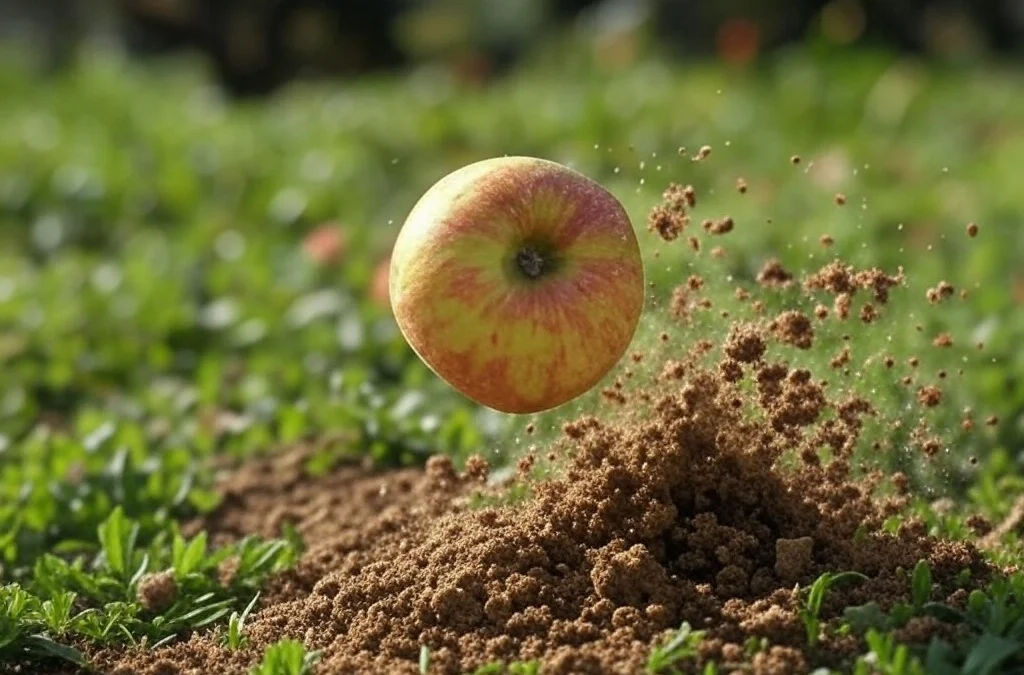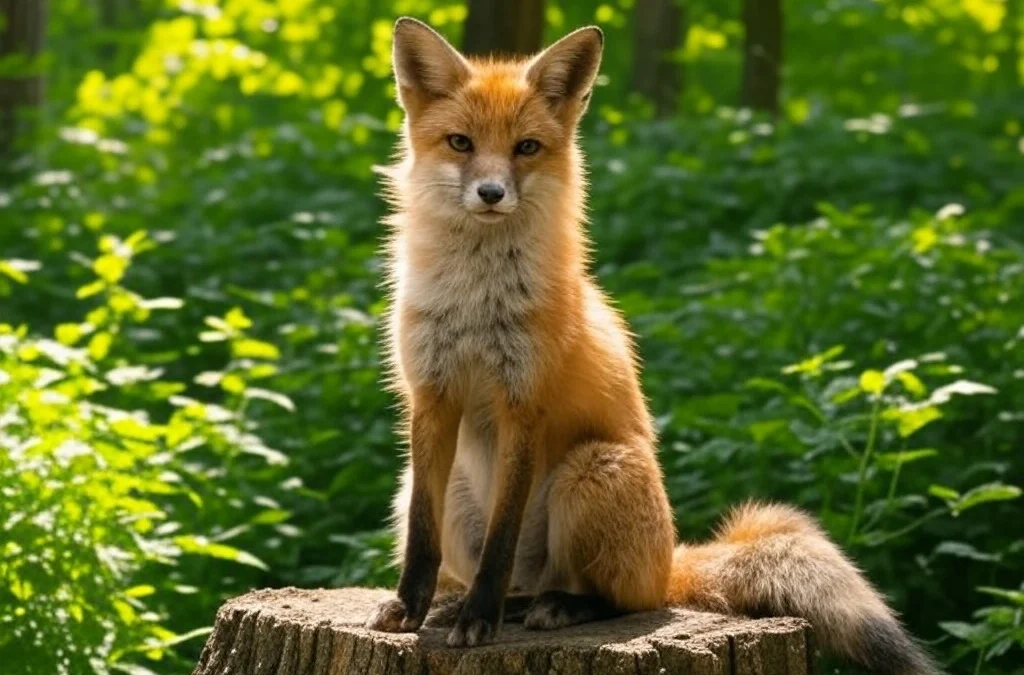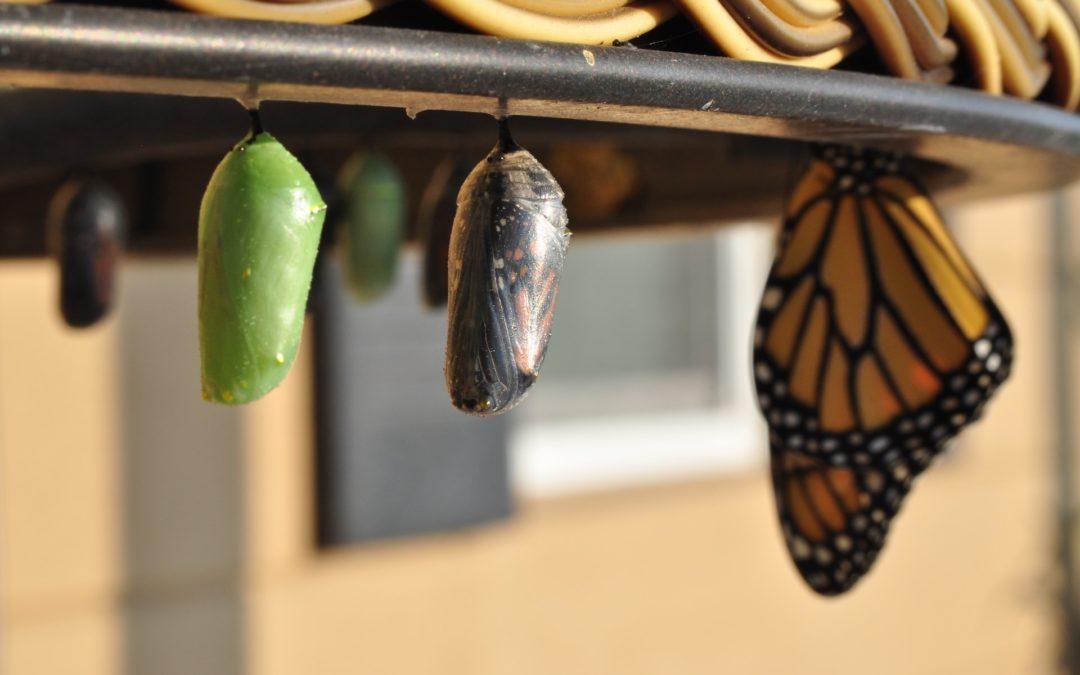Metamorphosis, the intricate process of transformation and change, manifests in a different forms across the natural world, human experiences, and societal dynamics. From the captivating life cycles of insects to the evolving landscapes of technology and culture, the concept of metamorphosis encapsulates the essence of adaptation, growth, and renewal. In this discussion, we delve into 30 diverse examples of metamorphosis, spanning the realms of biology, personal development, technological innovation, and cultural evolution. Each example offers a unique lens through which to appreciate the dynamic nature of change and the myriad ways in which it shapes the intricate tapestry of life. Join us on a journey through these transformative processes, each unveiling the beauty and complexity inherent in the constant state of metamorphosis that defines our world.
What is Metamorphosis?
Metamorphosis refers to a significant change or transformation in the form or structure of a thing, being, or concept. This transformation can be physical, biological, or symbolic. In biology, it specifically denotes the process through which an organism undergoes a conspicuous and relatively abrupt change in its body structure through growth and differentiation, as seen in insects transitioning from larvae to adults. Metamorphosis also extends to other fields, symbolizing profound changes in form, character, or function in areas like literature, art, personal development, and technology. This concept encapsulates the idea of a transformative journey or evolution from one state to another, marking a fundamental and often irreversible change.
In literature and the arts, metamorphosis represents a deep, often allegorical transformation of characters, themes, or perspectives. This is evident in stories where characters undergo significant personal growth or change in identity. Similarly, in technology and business, metamorphosis signifies the radical evolution of products, services, or organizational structures, often in response to changing market dynamics or technological advancements.
In a philosophical or psychological context, metamorphosis can describe the process of personal growth and self-discovery, where an individual undergoes a profound transformation in mindset, behavior, or life perspective. This concept is central to discussions about human development, representing the journey towards self-actualization and the realization of one’s potential.
Metamorphosis, therefore, transcends its original biological meaning to encapsulate a universal theme of change and evolution, applicable to various aspects of life and study. It underscores the dynamic and ever-changing nature of existence, whether it pertains to living organisms, personal journeys, cultural narratives, or technological progress.
The Best Metamorphosis Examples
1. Butterfly Life Cycle – The metamorphosis in butterflies is a captivating journey. It commences with a delicate egg laid on a host plant. From this tiny egg emerges a voracious caterpillar, undergoing multiple molts, symbolizing growth and adaptation. The next phase unfolds within the protective confines of a chrysalis. Inside this seemingly dormant state, the caterpillar undergoes a profound transformation, rewriting its genetic code. Finally, a spectacular emergence occurs, revealing the metamorphosed creature—a winged marvel, the adult butterfly, symbolizing beauty, change, and the cyclical nature of life.
2. Frog Metamorphosis – The amphibian world showcases a fascinating metamorphosis in frogs. It initiates with the development of eggs, progressing into tadpoles equipped with gills for aquatic life. As tadpoles mature, they sprout limbs and develop lungs, culminating in a remarkable transformation into adult frogs capable of thriving in both water and on land. This biological metamorphosis embodies adaptability and survival strategies in diverse environments.
3. Personal Growth – Human beings undergo a lifelong metamorphosis, a continuous journey of self-discovery and development. From the innocence of childhood to the challenges of adolescence, each experience shapes character and values. Learning from successes and failures, acquiring new skills, and evolving emotionally and intellectually are integral aspects of this personal metamorphosis. It reflects the resilience and adaptability inherent in the human spirit.
4. Career Evolution – Career metamorphosis is a dynamic process reflecting professional growth and adaptation. It involves acquiring new skills, navigating industry changes, and possibly transitioning between different careers or roles. This metamorphosis symbolizes the pursuit of passion, knowledge, and the resilience needed to navigate the ever-evolving professional landscape.
5. Caterpillar to Moth – Moths, like their butterfly counterparts, embark on a transformative journey. Caterpillars undergo a symbolic period of seclusion within cocoons, representing introspection and change. Emerging as winged moths, they showcase the quiet beauty that can arise from metamorphosis, emphasizing the transformative power of solitude and self-reflection.
6. Seasonal Changes – The transition from winter to spring is a natural metamorphosis in the world around us. It involves a profound shift in temperature, flora, and fauna. This seasonal metamorphosis signifies renewal, growth, and the cyclical rhythm of nature, highlighting the interconnectedness of all living things.
7. Puberty – Human puberty is a complex metamorphosis, marked by physical, hormonal, and emotional changes. This transformative period symbolizes the transition from adolescence to adulthood, with individuals navigating identity, relationships, and self-discovery.
8. Digital Evolution – The metamorphosis in the digital landscape signifies a revolution in communication, work processes, and daily life. The adoption of digital technologies reflects a societal shift, transforming the way we connect, work, and access information, illustrating the profound impact of technological advancements on modern living.
9. Seed to Plant – Botanical metamorphosis is evident in the growth of a seed into a mature plant. The process involves germination, root and shoot development, and flowering—a testament to the resilience and potential encapsulated within a tiny seed. This botanical metamorphosis mirrors the broader themes of growth, renewal, and the cycles of life.
10. Human Relationships – Relationships undergo a metamorphosis, evolving from initial acquaintances to deeper connections. This transformation reflects the intricacies of personal and emotional growth, emphasizing the importance of shared experiences and mutual understanding in fostering meaningful connections.
11. Artistic Progression – The evolution of artists in their style, technique, and expression mirrors a profound artistic metamorphosis. Influenced by experiences and driven by a perpetual desire for creative exploration, this metamorphosis signifies the fluidity and adaptability inherent in the artistic journey.
12. Weather Patterns – Meteorological metamorphosis is observed in the transition between different weather conditions. A storm giving way to clear skies illustrates the dynamic nature of weather patterns, symbolizing the resilience of nature in the face of turbulence and change.
13. Language Development- The evolution of language is a linguistic metamorphosis, characterized by the introduction of new words, changes in pronunciation, and shifts in grammar and syntax. This dynamic process reflects cultural influences, societal changes, and the adaptability of language to express evolving ideas.
14. Technological Advancements – Continuous technology innovation represents an ongoing metamorphosis in the tech realm. The development of new tools, gadgets, and systems reflects humanity’s ceaseless pursuit of progress, efficiency, and improved quality of life.
15. Egg to Chick – Avian metamorphosis is evident in the hatching of an egg and the subsequent growth of a chick. This developmental journey involves a series of stages, highlighting the marvel of life and the intricate process of avian growth.
16. Evolution of Fashion Trend – Fashion metamorphosis is a perpetual cycle of change, influenced by shifting tastes, cultural dynamics, and emerging design trends. This continuous evolution reflects the creative expression and adaptability inherent in the world of fashion.
17. Community Development – The growth and transformation of communities reflect a societal metamorphosis. As populations change, infrastructure develops, and cultural dynamics evolve, communities adapt and evolve, showcasing the interconnectedness of individuals within a broader societal context.
18. Character Development in Literature – Literary characters often undergo metamorphosis, experiencing personal growth or transformation throughout a narrative. This narrative device emphasizes the dynamic nature of characters and their ability to evolve in response to challenges and experiences.
19. Transformation of Raw Materials – Industrial metamorphosis occurs in the transformation of raw materials. Processes like refining and shaping lead to the creation of finished products, highlighting the ingenuity and innovation within the realm of industrial production.
20. Life Cycle of Stars – Celestial metamorphosis is observed in the life cycle of stars. From their formation through various stages, including fusion, expansion, and, ultimately, collapse or explosion, stars exemplify the grandeur and transformative power within the cosmos.
21. Urbanization – The expansion of urban areas involves a metamorphosis in the landscape of human habitation. Changes in infrastructure, lifestyle, and the environment characterize this process, illustrating the impact of urbanization on societal structures and individual lives.
22. Emotional Healing – Personal metamorphosis is evident in the process of overcoming challenges and healing from emotional wounds. This journey involves introspection, resilience, and personal growth, symbolizing the transformative power of emotional healing.
23. Economic Shifts – Economic systems undergo metamorphosis due to factors like technological advancements, globalization, and changes in consumer behavior. This economic metamorphosis reflects the dynamic nature of markets and the interconnectedness of global economies.
24. Educational Growth – The educational metamorphosis involves the journey from ignorance to knowledge. Learning, critical thinking, and the acquisition of skills characterize this process, highlighting the transformative power of education in shaping individuals and societies.
25. Cultural Evolution – Cultural metamorphosis is observed in the evolution of cultures over time. Adapting to new ideas, influences, and global interactions, cultures undergo shifts in societal norms, values, and traditions, illustrating the dynamic nature of human societies.
26. Aging Process – The natural aging process involves physical and mental changes, representing a gradual metamorphosis throughout an individual’s life. This process symbolizes the wisdom, experience, and resilience that come with the passage of time.
27. Political Revolutions – Political revolutions bring about transformative changes in governance, societal structures, and power dynamics. These historical events signify a societal metamorphosis, often driven by the collective desire for freedom, justice, and political reform.
28. Technological Convergence – The integration of different technologies into a unified system represents a metamorphosis, creating new possibilities and functionalities. This convergence reflects the synergies between different technological innovations, shaping the future of interconnected and smart systems.
29. Recovery from Adversity – Bouncing back from challenges involves a personal metamorphosis, demonstrating resilience, adaptability, and personal growth. This journey of recovery emphasizes the strength and transformative power within individuals facing adversity.
30. Evolution of Social Norms – Social norms change over time, reflecting shifts in societal values, inclusivity, and acceptance. This continuous metamorphosis in cultural attitudes highlights the dynamic nature of social structures and the ongoing quest for a more inclusive and equitable society.
How Is Metamorphosis Culturally Significant?
Metamorphosis holds profound cultural significance as a symbol of transformation, growth, and renewal across various societies and artistic expressions. In literature, mythology, and folklore, the theme of metamorphosis often serves as a powerful narrative device, representing the human experience of change and evolution. Ancient myths and religious texts frequently incorporate tales of beings transforming into different forms, reflecting the broader human fascination with the cyclical nature of life. Additionally, the concept of metamorphosis is prevalent in art, where it is utilized as a metaphor for personal development, resilience, and the pursuit of one’s true potential. The butterfly, emerging from the chrysalis, is a common motif in many cultures, representing not only physical transformation but also spiritual awakening and rebirth. Moreover, the cultural significance of metamorphosis extends to modern times, influencing contemporary literature, cinema, and visual arts, where it continues to be a powerful symbol of self-discovery and the enduring capacity for positive change in the face of challenges. In essence, the concept of metamorphosis resonates deeply within human cultures, capturing the timeless and universal theme of personal and collective transformation.
Importance Of Metamorphosis in Our Life
Metamorphosis holds profound significance in our lives, influencing various aspects ranging from personal development to the functioning of ecosystems. Understanding the importance of metamorphosis can provide insights into adaptation, growth, and the dynamic nature of life.
Adaptation and Survival – In the natural world, metamorphosis is an adaptive strategy that enables species to thrive in diverse environments. Insects like butterflies and amphibians like frogs undergo metamorphosis, allowing them to exploit different ecological niches and increase their chances of survival.
Symbol of Change and Growth – Metamorphosis serves as a powerful metaphor for personal development and growth. As individuals, we navigate through different life stages, continuously adapting to new circumstances, acquiring skills, and evolving emotionally and intellectually.
Ecosystem Balance – Metamorphosis plays a crucial role in maintaining ecological balance. For instance, the life cycles of insects contribute to pollination, decomposition, and nutrient cycling, influencing the health and stability of ecosystems.
Innovation and Progress – Metamorphosis is mirrored in technological advancements and societal evolution. Embracing change and adapting to new technologies drive innovation, progress, and the development of more efficient and sustainable systems.
Resilience and Adaptability – Metamorphosis teaches us the importance of resilience and adaptability in the face of challenges. Life is dynamic, and the ability to navigate transitions with flexibility and openness is essential for personal and professional success.
Cultural and Social Evolution – Societal norms, values, and cultural practices undergo metamorphosis over time. Embracing diversity, inclusivity, and evolving social attitudes contribute to a more progressive and harmonious society.
Educational and Professional Growth – Metamorphosis is evident in the educational and professional realms, where individuals continuously learn, acquire new skills, and adapt to evolving knowledge and industry demands.
Healing and Overcoming Adversity – In personal struggles, the concept of metamorphosis provides a framework for overcoming adversity. Just as a caterpillar transforms into a butterfly, individuals can emerge stronger and more resilient after facing challenges.
Creativity and Artistic Expression – Artists often undergo a metamorphosis in their creative journey, exploring new styles, techniques, and expressions. This process of artistic evolution contributes to the richness and diversity of cultural expression.
Interconnectedness of Life – Metamorphosis highlights the interconnectedness of all living things. Changes in one aspect of life, whether biological, personal, or societal, can have ripple effects, emphasizing the dynamic and interdependent nature of existence.
In essence, the importance of metamorphosis lies in its role as a catalyst for change, growth, and adaptation. Embracing the transformative nature of life allows us to navigate uncertainties with resilience, learn from experiences, and contribute to the continual evolution of ourselves and the world around us.
How Does Metamorphosis Contribute to Ecosystem Balance?
Metamorphosis plays a crucial role in maintaining ecosystem balance by diversifying the ecological functions and roles that organisms perform at different stages of their life cycles. Insects undergoing metamorphosis often fulfill distinct roles in each stage, contributing to ecological processes in unique ways. For instance, during the larval stage, insects such as caterpillars or grubs are voracious feeders, playing essential roles in nutrient cycling and plant decomposition. As these larvae transform into pupae and, eventually, into adults, they assume different functions, such as pollination, seed dispersal, and acting as predators or prey. This diversification of ecological roles enhances the overall stability of ecosystems by preventing over-reliance on specific species for particular tasks. The intricate web of interactions resulting from metamorphosis contributes to the resilience and adaptability of ecosystems, ensuring the efficient cycling of nutrients, the promotion of biodiversity, and the overall health of ecological communities. In essence, metamorphosis serves as a fundamental ecological strategy, contributing to the intricate balance and harmony of natural ecosystems.
Types of Metamorphosis (Insects)
Metamorphosis comes in several types, each exhibiting distinct characteristics. The two primary types are complete metamorphosis (holometabolous) and incomplete metamorphosis (hemimetabolous).
Complete Metamorphosis (Holometabolous)
Egg – The life cycle begins with the laying of eggs.
Larva (Caterpillar or Grub) – Hatches from the egg and undergoes intense feeding and growth.
Pupa (Chrysalis or Cocoon) – The larva transforms into a non-feeding, often immobile stage where substantial internal changes occur.
Adult – The final stage emerges from the pupa with wings and reproductive capabilities.
Examples – Butterflies, moths, beetles, flies, and bees undergo complete metamorphosis.
Incomplete Metamorphosis (Hemimetabolous)
Egg – The life cycle starts with the laying of eggs.
Nymph – Hatches from the egg resembling a miniature adult but lacks wings and reproductive organs. Nymphs go through multiple molts, growing and gradually resembling the adult form.
Adult (Imago) – The final stage emerges after the last nymphal stage with wings and reproductive capabilities.
Examples – Grasshoppers, dragonflies, and cockroaches undergo incomplete metamorphosis.
Gradual Metamorphosis
Egg – The life cycle starts with the laying of eggs.
Nymph – Hatches from the egg resembling a miniature adult and gradually undergoes molts, becoming more adult-like with each stage.
Adult (Imago) – The final stage emerges after the last nymphal stage with wings and reproductive capabilities.
Examples – True bugs (like stink bugs and aphids), termites, and some grasshoppers undergo gradual metamorphosis.
Paurometabolous Metamorphosis
Egg – The life cycle begins with the laying of eggs.
Nymph – Hatches from the egg and closely resembles the adult, but lacks wings and reproductive organs. Nymphs go through molts, gradually developing wings and reproductive capabilities.
Adult (Imago) – The final stage emerges after the last nymphal stage with fully developed wings and reproductive organs.
-
- Examples –True bugs, such as cicadas and leafhoppers, undergo paurometabolous metamorphosis.
The Magic of Metamorphosis in the Animal Kingdom
Metamorphosis, nature’s remarkable process of transformation, is not just a chapter in the life of a butterfly. This biological phenomenon, where creatures undergo significant physical changes from birth to adulthood, casts a wider net across the animal kingdom than many realize. It’s a captivating tapestry of nature’s ingenuity, showcasing how different species adapt to their environments and life stages in the most extraordinary ways.
Among the most well-known practitioners of metamorphosis are butterflies and moths, members of the Lepidoptera order. Their life cycle is a well-documented marvel: from an egg emerges a caterpillar, which then encases itself as a pupa, eventually blossoming into a winged adult. This process is a striking display of nature’s magic, a literal unfolding of wings where there once were none, symbolizing transformation and renewal in cultures worldwide.
Butterflies and moths are not the only ones to embrace change. Amphibians, like frogs and salamanders, also lead lives of dramatic transformation. Consider the journey of a frog, beginning its life as a water-bound tadpole, breathing through gills and swimming with a tail. As it matures, the tadpole undergoes a radical transformation, trading its aquatic lifestyle for a terrestrial one, developing lungs for air-breathing and legs for hopping. This metamorphosis is not just a change in habitat but a complete overhaul of its bodily functions and structure.
Metamorphosis also occurs in the sea. The lives of many fish are marked by this transformative process. Take the humble flounder, which starts life resembling a typical fish but as it grows, one eye migrates to the other side of its body, preparing it for a life spent sideways on the ocean floor. This change is as practical as it is bizarre, a testament to nature’s propensity for tailoring creatures to their ecological niches.
Insects beyond butterflies and moths also undergo metamorphosis. The process is so prevalent in this class that entomologists, scientists who study insects, classify them based on the type of metamorphosis they undergo. Beetles, bees, and wasps transform from larvae to pupae to adults, a process termed complete metamorphosis. In contrast, insects like grasshoppers and cockroaches experience an incomplete metamorphosis, where they hatch from eggs as nymphs – smaller versions of their adult forms – and mature without a pupal stage.
Metamorphosis, however, is not just a showcase of nature’s ability to remodel; it’s a critical adaptive mechanism. For many species, these transformations allow them to exploit different ecological resources during their lives. A caterpillar’s voracious appetite for leaves differs markedly from the nectar-sipping habits of its butterfly counterpart, reducing competition for resources and increasing survival chances.
Understanding metamorphosis is not just a matter of scientific curiosity. It offers insights into the resilience and adaptability of life on Earth. As we marvel at the butterfly spreading its wings for the first time or a frog leaping from its aquatic nursery into the forest, we’re witnessing not just a change in form, but a profound survival strategy honed through millions of years of evolution. It’s a reminder of the intricate and dynamic relationships between organisms and their environments, a pageantry of transformation that underscores the complexity and wonder of the natural world.
The Most Popular on BitGlint

40 Social Dilemma Examples in the World & Real Life
Social dilemmas are everywhere. They shape the choices we make at work, in our communities, and even on a global...

30 Favor Examples & Definition
Doing a favor means helping someone without expecting anything in return. It’s an act of kindness that can strengthen...

30 Naivety Examples & Definition
Naivety is something most people experience at some point in their lives. It often starts in childhood, but for some,...

20 Chronology Examples & Meaning
Chronology is something we use more than we realize. It shows up in conversations, in how we remember the past, and in...

30 Wishful Thinking Examples & Meaning
Wishful thinking is something we all do at some point. You hope things will turn out fine—even if there’s no real...

20 Examples of Gravity & What Gravity Really Is
Gravity is one of the most important forces in the universe, but many people don’t fully understand what it really is...

20 Examples of Secondary Consumers in the Food Chain
Secondary consumers are animals that eat other animals—usually herbivores that feed on plants. They’re an important...
Get Inspired with BitGlint
The Latest
30 Flow State Examples & Definition
Most people have felt it at some point — that rare moment when everything just clicks. You're working, moving, or thinking, and suddenly it's like the rest of the world fades out. You're focused, clear, and everything you're doing feels smooth and natural. That’s...

30 Cynicism Examples in Everyday Life & Definition
Cynicism is something most people have seen, heard, or even felt - but few stop to really think about what it means. It shows up in jokes, in conversations, and in quiet thoughts we don’t always say out loud. Some people wear it like armor. Others see it as honesty....
50 Examples of Square Things
Square things are part of everyday life, even if we don’t always think about them. From objects we use at home to tools, packaging, and design elements we see out in the world, the square shape is everywhere. It’s simple, balanced, and practical — which is exactly why...
20 Hinduism Examples: Symbols, Gods & Core Beliefs
Hinduism is practiced by over a billion of people every day - but for those unfamiliar with it, it can seem complex or even confusing. With its many gods, rituals, and traditions, it raises a lot of questions. What do Hindus actually believe? What are the main...

